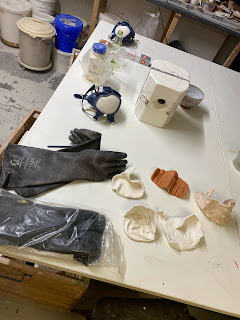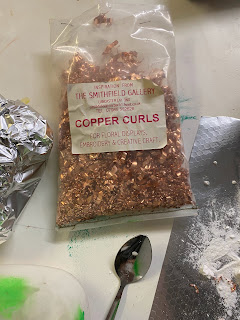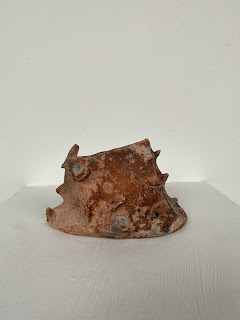Studio practice
Sagger experiments
In preparation to creating my final piece for this project I have decided to do some experiments. I am using the saggar firing technique on my final piece but I didn’t know which clay would work best with it, so I decided to create small pieces exploring textures within nature like that on my rocks and shells in each clay, saggar fire them and then create my piece.
- A saggar is a type of container or coating that protects the piece whilst in the kiln, I’m using the aluminium foil saggar method this is the process of coating a ceramic piece in ferric chloride , then coating it in things that will burn away and wrapping it tightly in aluminium foil. I used copper carbonate, copper coils, sodium carbonate, iron spangles, wire wool and wire, using different combinations in each to find the best reaction. When firing this leaves beautiful marks and textures on the pots. When doing this process there is huge precautions you have to take as ferric chloride is highly corrosive, throughout the whole process we wore rubber gloves and ventilation masks.

























Comments
Post a Comment